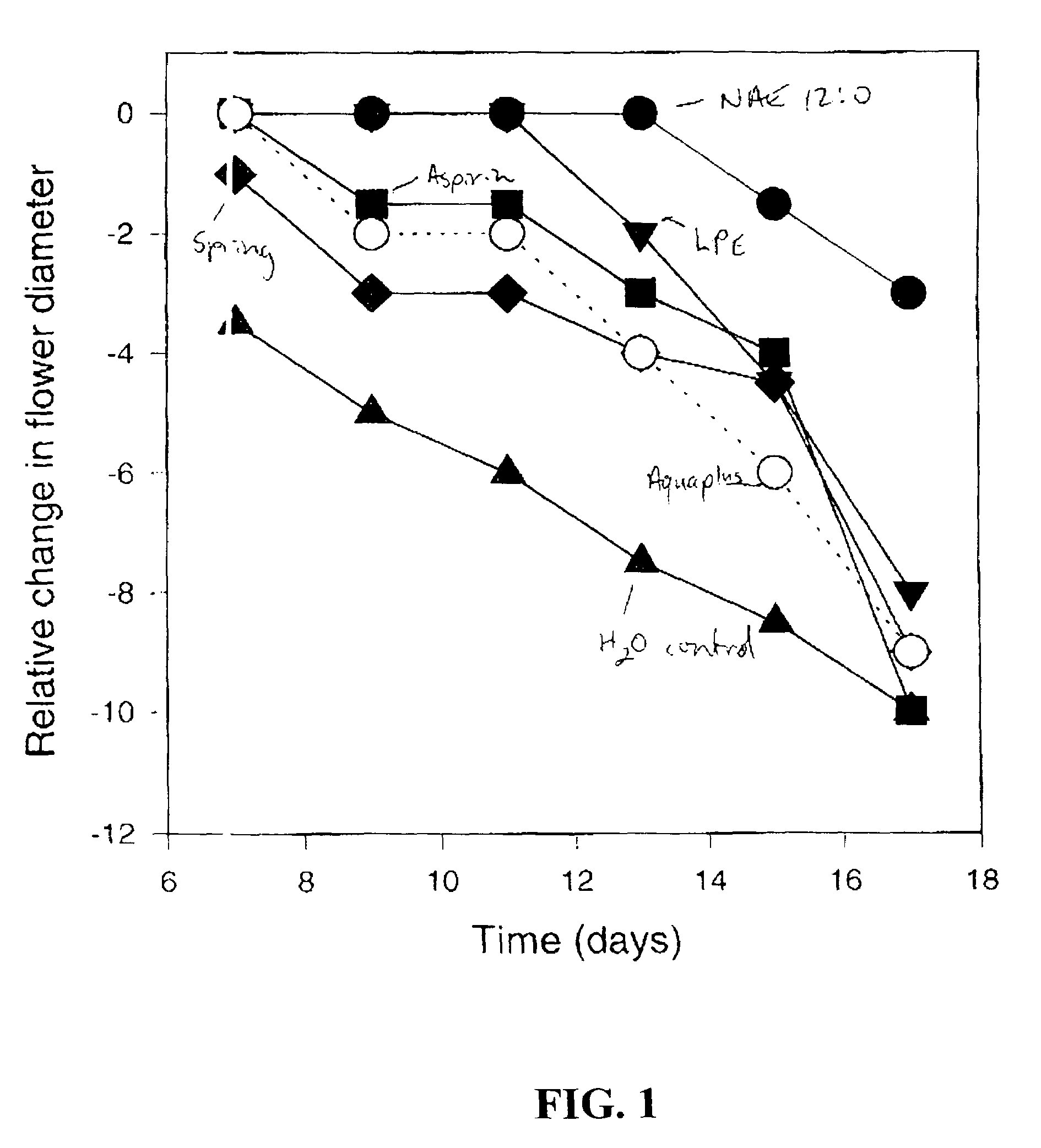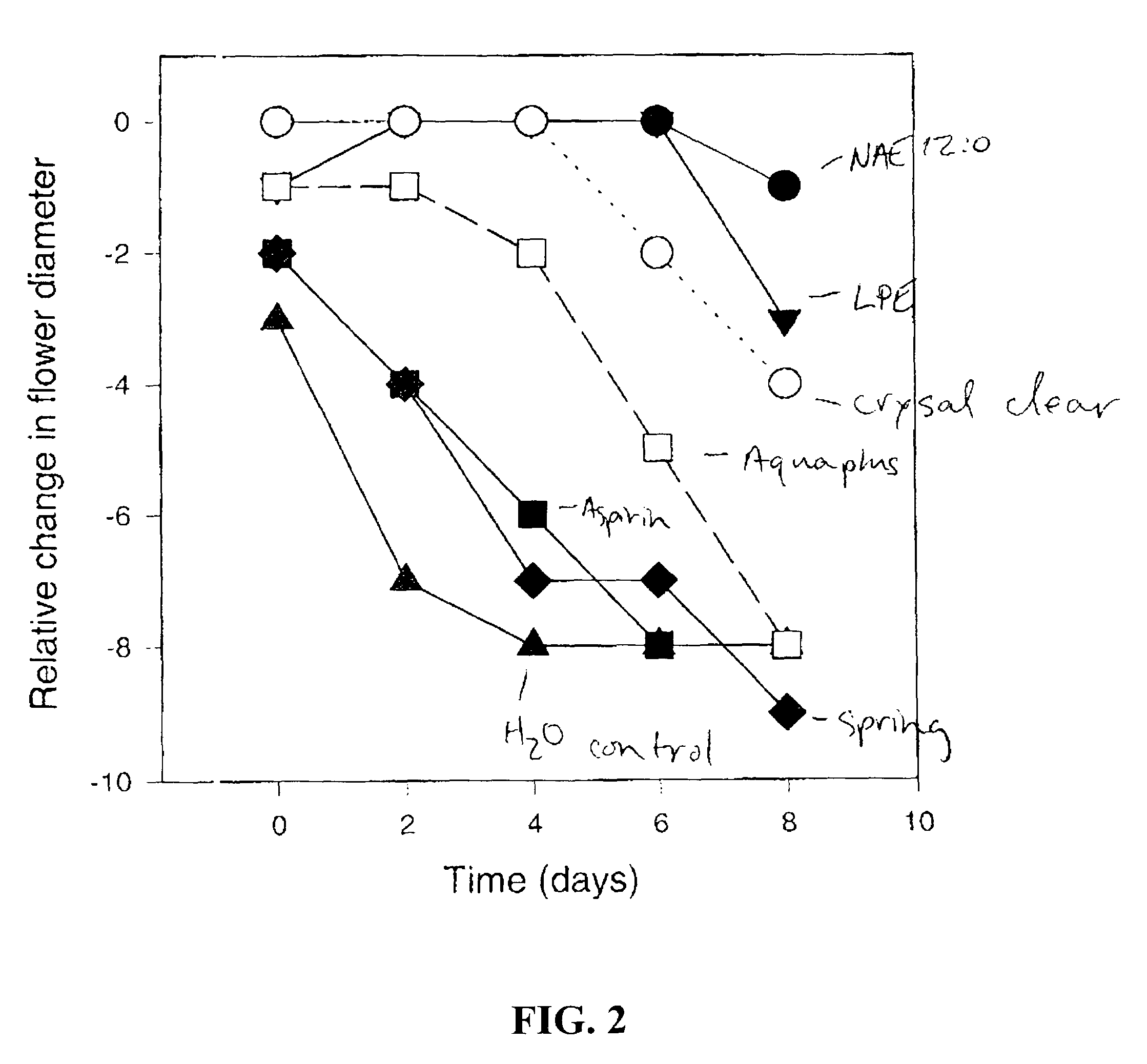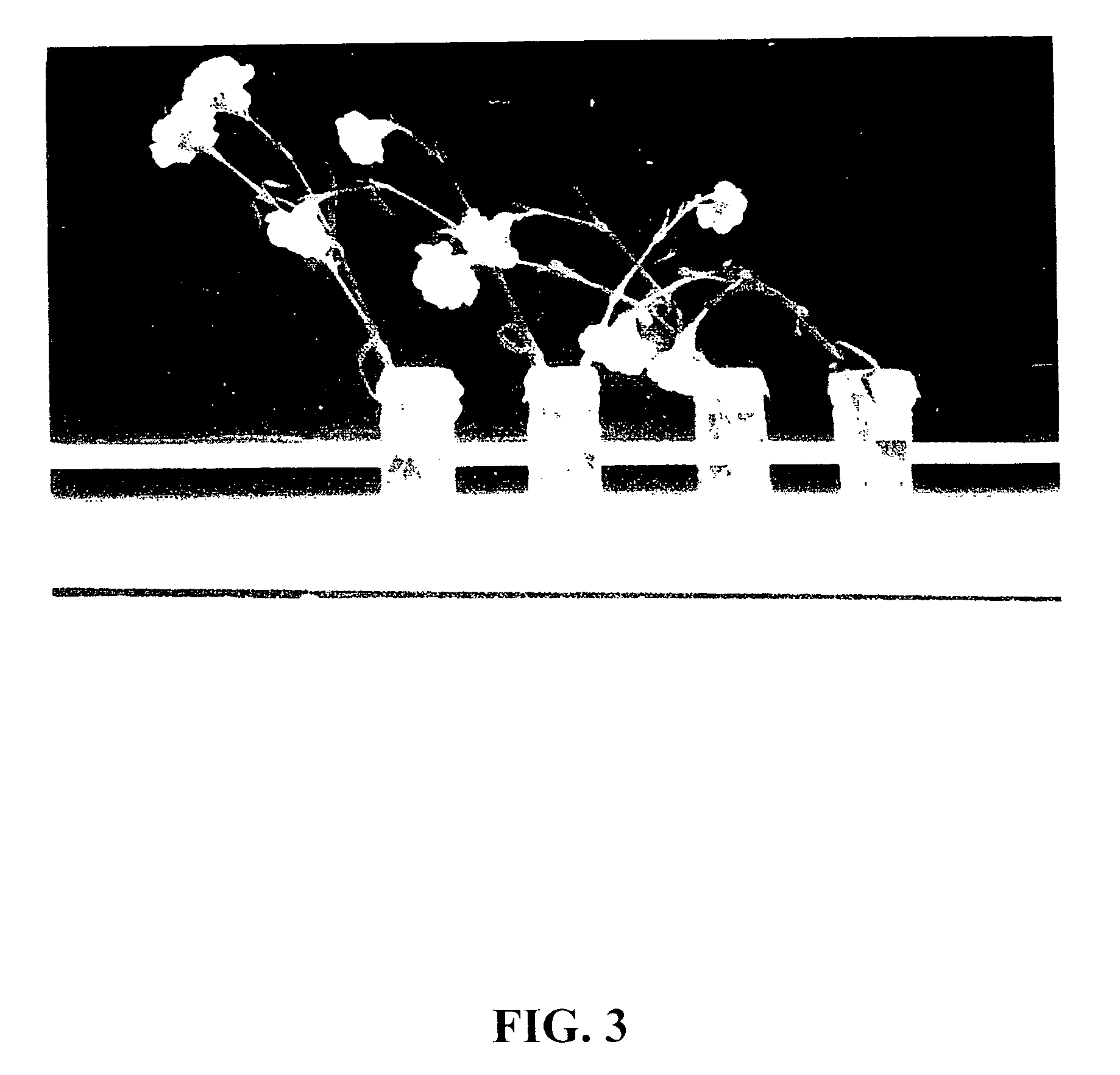Methods for extending the freshness of cut flowers, ornamental trees, and plant cuttings
a technology of cutting flowers and cuttings, applied in the field of floral and botanical preservative compositions, can solve the problems of reducing the production rate, wilting of flowers, and rapidly exhausted nutrient reserves of leaves and flowers of plant parts,
- Summary
- Abstract
- Description
- Claims
- Application Information
AI Technical Summary
Benefits of technology
Problems solved by technology
Method used
Image
Examples
example 1
5.1 Example 1
Synthesis of Nape
[0297]Chemical synthesis of radiolabeled NAPE was modified from a reaction scheme originally proposed by Dawson et al. (1969). The synthesis is illustrated in FIG. 1A and FIG. 1B. A 10-fold increase in phosphatidylethanolamine concentration forced the reaction toward completion. The modification led to a three-fold greater conversion of product (FIG. 1) than previously reported (DeSouza, 1997).
[0298][14C]NAPE was synthesized chemically using 1 μCi of sn-1,2-dioleoyl-glycero-3-phosphoryl-[ethanolamine-2-14C] ethanolamine (54 mCi / mmol). 2.7 μmol of nonradiolabeled dioleoyl-PE, and 8.3 μmol of palmitoyl chloride as previously described (Dawson et al., 1969).
[0299]NAPE was separated from PE by silica-gel thin-layer chromatography, recovered in chloroform, and quantified by liquid scintillation counting. This procedure had a routine conversion from PE to NAPE of 90% or greater.
[0300]L-3-Phosphatidyl [2-14C] ethanolamine, 1,2-dioleoyl purchased from Amersham ...
example 2
5.2 Example 2
Expression of Active PLDs in E. coli
[0301]The recombinant castor bean PLD α and the A. thalania PLD β, γ and δ in pBluescript SK(−) were obtained from Dr. Xenmin Wang (Department of Biochemistry, Kansas State University, Manhattan, Kans.). The following protocol was adapted from previously described methods (Pappan et al., 1997b). Expression of PLD α, β, β and δ from their cDNAs was performed using pBluescript SK(−) (Strategene, La Jolla, Calif.) containing the cDNA inserts in E. coli JM109 cells (Promega, Madison, Wis.). Fifty microliters of an overnight culture containing the transformed JM109 cells were added to 25 ml of LB medium with 50 μg / ml ampicillin. The cells were incubated at 37° C. with shaking for 3 h, and then IPTG was added to a final concentration of 2 mM. The cells were grown overnight at 30° C. and pelleted by centrifugation for 10 min at 2000 rpm (Beckman TJ-6 rotor). The cells were then resuspended in an assay mixture containing 50 mM Tris-HCl (pH 8...
example 3
5.3 Example 3
PLD Activity Toward NAPE and PC Among Isoforms
[0320]The activities of PLD isoforms expressed in E. coli cells were compared (FIG. 2). The formation of radiolabeled phosphatidylalcohol was used to measure PLD activity when radiolabeled PC was used as a substrate. Radiolabeled NAE formation was used to measure PLD activity when radiolabeled NAPE was used as a substrate. NAPE hydrolysis was observed for both PLD β and γ, whereas PLD α and δ hydrolysis of NAPE was not detected. PLD β showed comparable hydrolytic activity toward NAPE and PC: whereas, PLD γ activity toward NAPE was three times greater than toward PC (FIG. 2). NAPE and PC hydrolysis occurred in lipid vesicles containing PIP2, 50 μM Ca2+, and over 50% PE. No activity was observed for PLD α in lipid vesicles composed of NAPE alone or NAPE:PC (1:1 molar ratio) (FIG. 2B). The structure of NAPE and the site of cleavage by PLD β and γ are shown in FIG. 3. This study demonstrated that PLD β and γ, which were known to...
PUM
 Login to View More
Login to View More Abstract
Description
Claims
Application Information
 Login to View More
Login to View More - R&D
- Intellectual Property
- Life Sciences
- Materials
- Tech Scout
- Unparalleled Data Quality
- Higher Quality Content
- 60% Fewer Hallucinations
Browse by: Latest US Patents, China's latest patents, Technical Efficacy Thesaurus, Application Domain, Technology Topic, Popular Technical Reports.
© 2025 PatSnap. All rights reserved.Legal|Privacy policy|Modern Slavery Act Transparency Statement|Sitemap|About US| Contact US: help@patsnap.com



